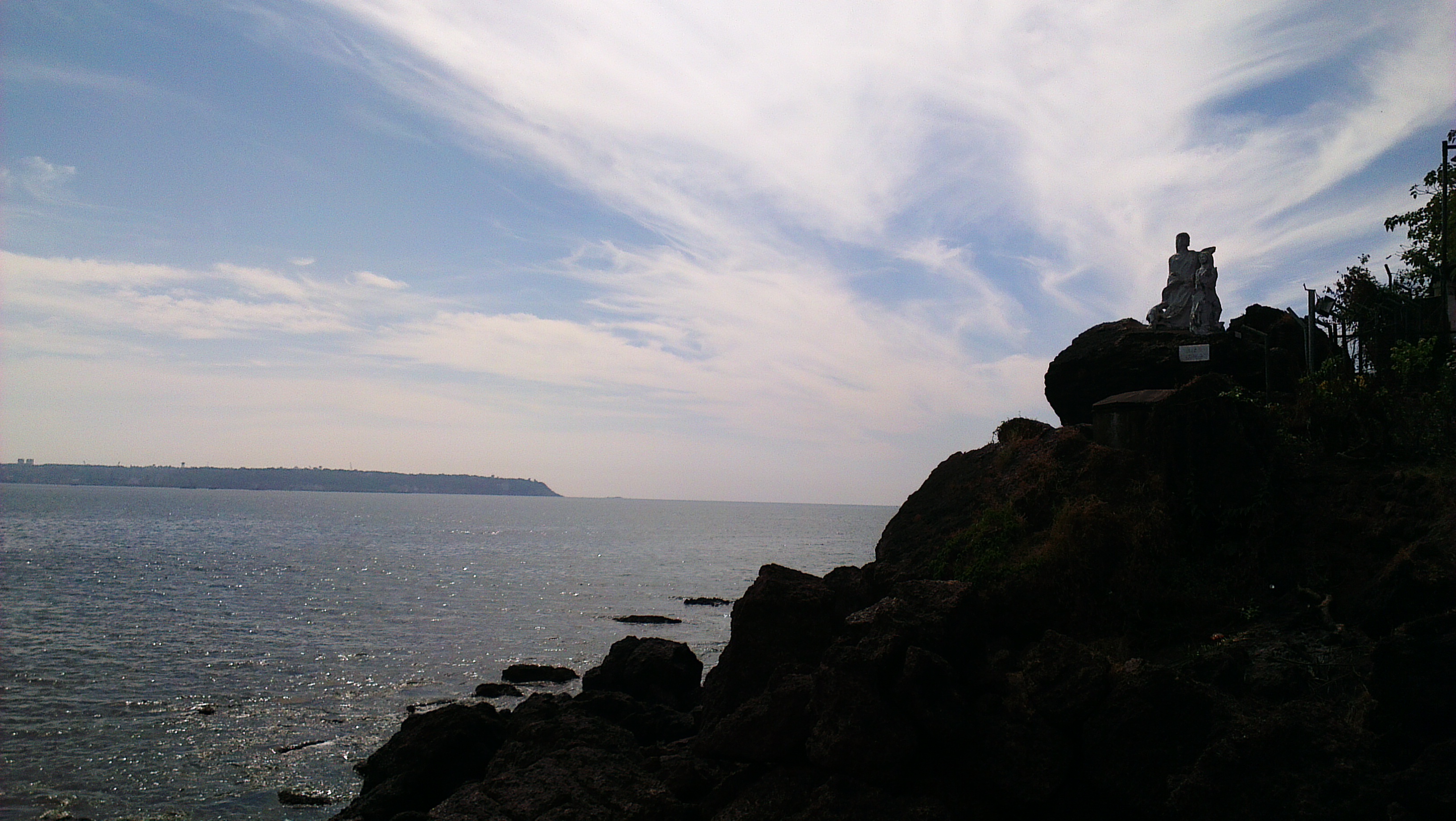Seven kilometers from Panaji, Goa’s capital city, as the moonlight hits the crashing waves at the rocky Dona Paula beach, an apparition rises, floating to the shores, crying in its anguish. She’s a lady, stately and elegant, wandering and lost, gliding on the rocky shores of the hammer-shaped headland that divides the Zuari and Mandovi estuaries, the two major rivers of Goa. She’s naked and wears nothing but a shiny pearl necklace that glitters around her neck. Her long hair whip and gasp, constantly in motion, like the waves she glides on. She walks up the steps, reaching the viewpoint so popular with tourists during the day, and cries out in pain, a silent scream that dissolves in the crashing of the sea.
Two whitewashed statues, ravaged by the salty air, stand by the bay. Even through the corroded marble, the two lovers look away, one to the east, one to the west. I imagine Paula to be a soft spoken, polite and cultured Portuguese. The official story says she was part of an extremely affluent family, the daughter of the Portuguese Viceroy of Jaffnapatnam, in Sri Lanka. Her family arrived in Goa in 1644 which is when she married Dom Antonio Souto Maior and became Paula Amaral Antonio de Souto Maior. She was a kind woman, who helped the villagers and worked for the betterment of the local peole. So much so that when she died, the fishermen renamed their village after her. Her tombstone, says the same version, lies in what is now the official residence of the Governor of Goa, at the westernmost tip of Dona Paula. In the Chapel at the Governor’s Palace at Raj Bhawan, she lies. There on her tombstone, is an inscription in Portuguese by her inconsolable husband, who begs those who might read it to pray for the salvation of her soul. Which makes me question. What would such a kind hearted, generous lady would’ve done to need the blessing of salvation from strangers till eternity? What crime has she committed that she hasn’t been able to find peace in more than three hundred years? 
Lovers, the locals whisper. An cab driver confidently tells me that even though her father was a Portuguese Viceroy, Dona (as is her name for locals) fell in love, head over heels with a humble fisherman called Paulo, a Konkani-speaking native. The two were lovers separated by their caste and nationality. Since they couldn’t get their parents too agree, they had no option left, and so killed themselves by jumping off the cliff. Perhaps it’s this story that brought the casting of the famous Bollywood movie Ek Duuje Ke Liye here. For in the same way, the two lovers, who can’t unite because of their differences, kill themselves by jumping off these very cliffs. Or maybe it’s the movie that created the story of Dona and Paula’s love?
Yet another local tale recounts that Paula fell in love with Gasper Dias, a Portugal nobleman, on whose estates a fort was built right here. He betrayed her and married someone else. Anguished, she jumped off the cliff. She rises in pitch dark, says this story, desperately looking for Dias to exact her revenge. She hasn’t been able to find him in 350 years though. Yet another tale, makes her a mistress. She was the lady-in-waiting of the Governor-General’s wife. The Governor, fell for her beauty and charms and a torrid affair began. When the Governor’s wife found out, she stripped her of everything except for a string of pearls, bounded her and rolled her over the cliff, into the crashing sea. The pearls were a gift from the Governor.
The legends about Paula abound, peppered with every retelling, more lovers added, more deaths recounted, more violence layered, more revenge accounted for. It’s evening and the sun swims in the Arabian Sea with a few dozens of jet skis bobbing with screechy tourists on them. Giggles of children rise up from the steps, with their parents shouting behind. Lovers hold hands, take a stroll on the promenade, buying trinkets from kiosks and clicking selfies. I look at the lonesome corroded statue again, looking away and wonder, why Paula’s heart wanders so. What’s that she seeks from the sea?
(Published in Discover India and Swarajyamag.com)


 (
(